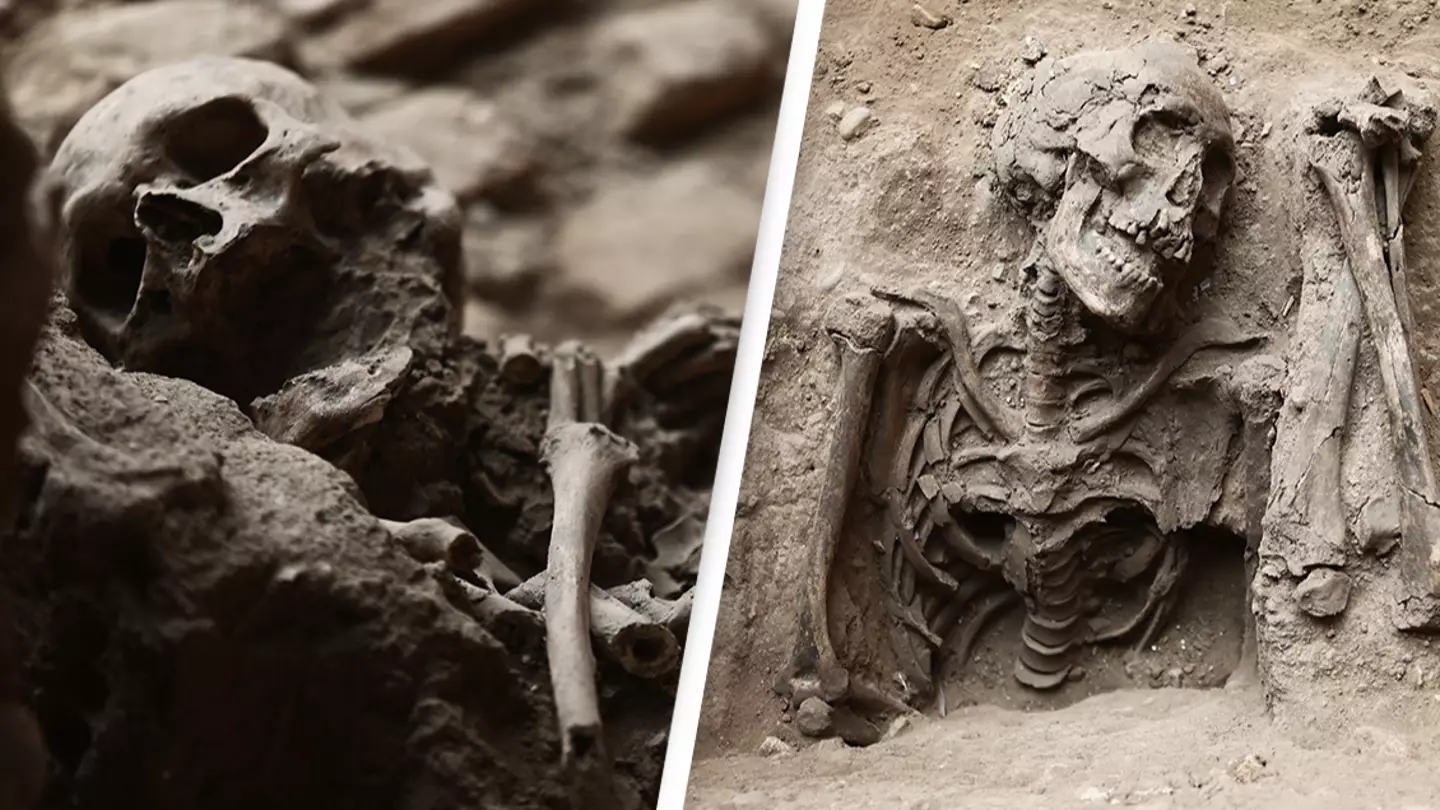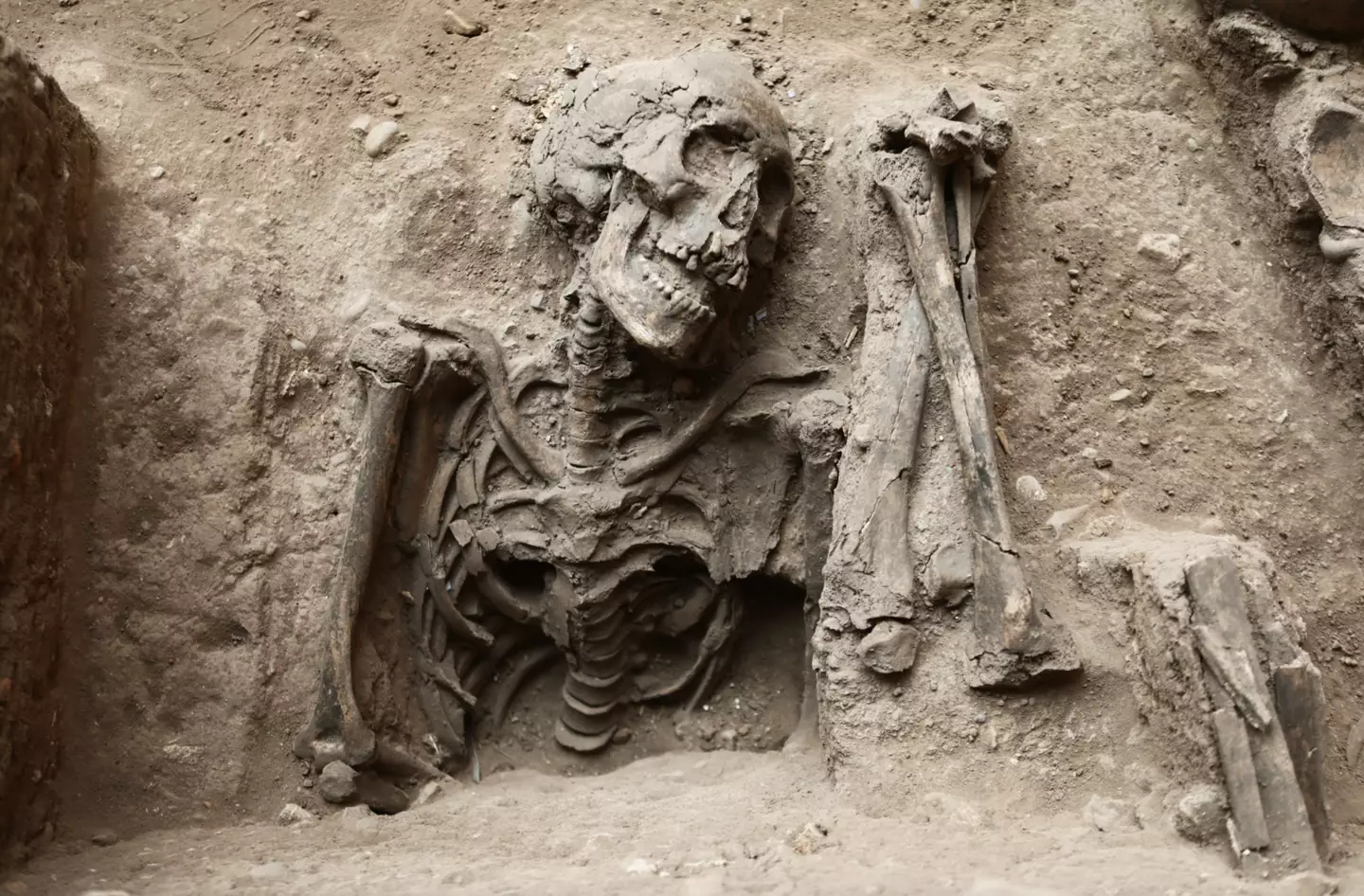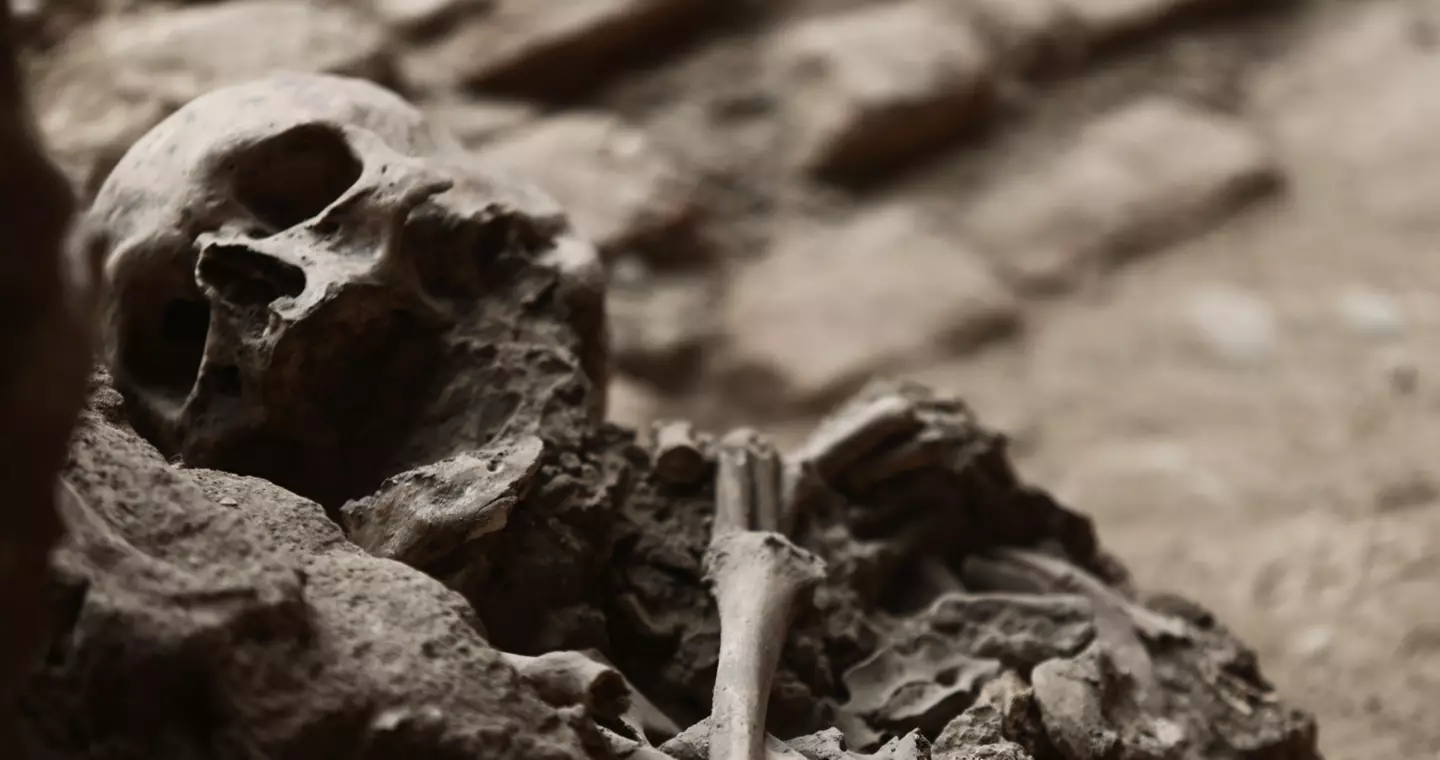
Archaeologists have unearthed the remains of 42 humans that date back to the 16th century, several of whom died of syphilis.
The bodies were found in a cemetery next to a centuries-old Peruvian hospital called Hospital Real de San Andres.
Skeletons unearthed in the Lima courtyard were only buried around 30cm beneath the ground, but remained undiscovered for centuries.

The Hospital Real de San Andres was built in 1552 and is the oldest hospital in South America, according to MailOnline.
Advert
Built specifically for Spanish patients, hospital doctors were some of the first of the century to be trained at the location.
The hospital was built next to a church to enable patients to be close to God, and the outlet notes that Hospital Real de San Andres also housed mentally ill people.
Hospital patients would have been placed in the building’s corridors so that they could listen to Mass taking place at the church.
Most of the skeletons found were male and aside from syphilis, likely died of skull deformities.
Advert
Experts have also suggested that the site might contain the remains of Inca mummies. Before the Spanish conquest, the Incas ruled the Andean region of South America.

An underground crypt and pieces of pre-Hispanic ceramics were also found, which most likely date back to the Incan Empire.
A cross was also discovered around the neck of one of the unearthed bodies.
Advert
Héctor Walde, chief archaeologist for the Lima municipality, said: “The people who did not survive the treatment were buried here. The ritual and religiosity in Lima was very strong.”
Of the prospect of finding Incan relics, Walde added: “Although it is not the initial objective of this project, we do not deny the interest of being able to find the royal mummies during the excavation process.”

Eulalia Sánchez, a local vendor, said: “On the whole block there are a lot of businesses. I didn't know there was a cemetery inside.”
Advert
Viceroy Andres Hurtado de Wildoso, a Spanish military officer, founded the hospital, which was designed in the shape of a cross.
Other structures on the site included a pharmacy, a psychiatric ward, offices, a garden and the cemetery.
Evidence of the cemetery was first uncovered when excavations started 20 years ago but it took two decades for the remains to be found.
A 19th-century fountain has also been uncovered as have a vaulted structure and a ‘colonial trash pit’.
Advert
If you have a story you want to tell, send it to UNILAD via [email protected]
Topics: Science
